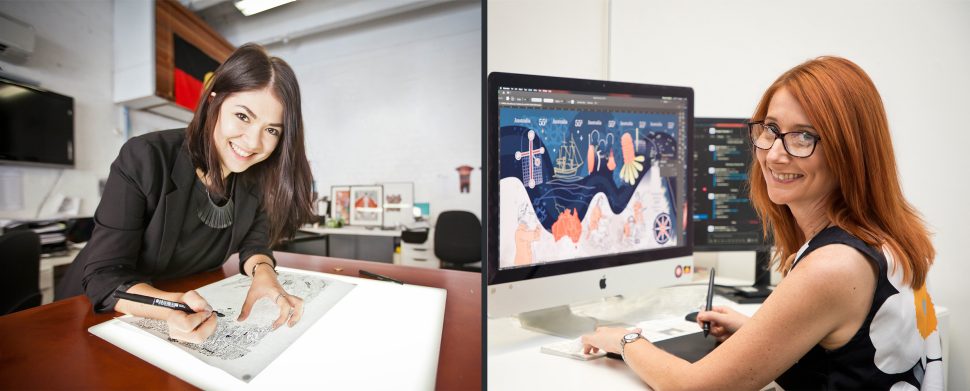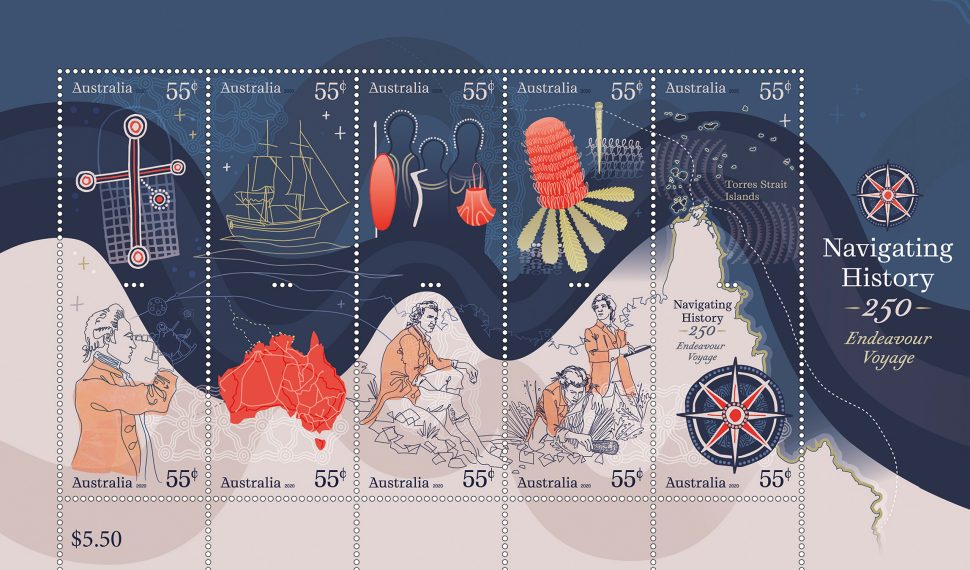| Time | Audio | Visual |
| 0:00 | Update music |
On a red screen, a white Australia Post logo appears below the title 'Navigating History, The Story Behind the Stamps'. |
| 0:10 | So, my name is Jenna Lee. I'm a descendant of the Larrakia people, whose traditional lands are the land, sea and sky of the Darwin region, as well as familial ties to Karajarri, who are in Western Australia, around Broome, and Wardamam, who are in the Northern Territory as well. And both of those connections come through my father's side. | A woman with long dark brown hair and a woman with long chocolate brown hair are interviewed against a backdrop of books and artworks displayed on shelves. The dark-haired woman wears a grey and black outfit. Text: Jenna Lee, Senior Designer/Artist, Gilimbaa: |
| 0:29 | Hi. My name is Niqui Branchu. I'm a first-generation Australian. My father was an immigrant from Germany. He and my grandmother escaped East Germany shortly after the war. |
The woman with chocolate brown hair wears a pattered blue and white top. Text: Niqui Branchu, Senior Graphic Designer, Gilimbaa: |
| 0:39 | The approach for the stamps was really important. I think if it hadn't been a collaboration, it would be a very different narrative. The whole stamp set is about perspectives, and so it was really important to have two perspectives or to have our own perspectives. | Sitting at a computer, Niqui and Jenna, smile and talk. Their interviews continue. Jenna: |
| 0:54 | We, in particular, looked at old previous stamp collections that might have focused on Cook and sort of the depiction of that story. We looked at what was good about it, what maybe could have been done a little bit better, or how we'd like to improve that narrative for the future, bearing in mind that, you know, stamps are like a stamp in time. So, when we looked at what was done in 1970, it was very different to the way we wanted to approach this particular stamp collection. |
They discuss an image on a screen. The interviews continue. Niqui: |
| 1:25 | Australia Post provided us with some really wonderful research and some pre-thinking, and then we went through that and had a look at the themes and decided, based on those themes and based on our research, what personally stood out. Just for an example, the Southern Cross was something that was really, I think, important for both of us to include because it's a symbol of national identity, but it's also something that Cook would have observed. But at the same time, it actually has quite a long history of cultural significance, particularly for Wardamam people, who I have connections to. So, it was about finding those little bits of connection with each of the themes that had multiple layers. And so everything depicted has kind of this element of layering. So, it is the Southern Cross, it is also a constellation, it is also unique to the Southern Hemisphere and it is also a cultural story. | Stamp images on the computer include colonial sailors, a compass, native flowers, a sailing ship and a stylised Southern Cross. Jenna: |
| 2:20 | The continual line that runs through the centre, we started calling the continual culture line that, you know, "always was, always will be," 60,000 years of continuing culture, but it also, really importantly, touches every single stamp. And really important to the stamp set is even though five of the stamps tell the 'Endeavour' story and five of the stamps tell the counter, the First Nations perspective, every single one of the stamps has a First Nations art element that touches the stamp. So, in Cook's stamp, there's a...an element that we've created to represent Australia as a connected community. That element touches every single stamp. |
A red map of Australia is divided into numerous areas. Jenna: |
| 3:03 | The 250-year commemoration is such a polarising subject, and I think there's a lot of... It's almost like a spectrum of reactions. And what Niqui and I were really conscious of is also the reactions within our own communities about this subject. And so I think the approach that we've taken is to be very self-reflective and this is absolutely...and I think it's really important to note that it's absolutely our response as two people to this subject, and that that response can differ with anybody that we interact with on a daily basis and that people will have differing opinions, and that's absolutely wonderful, and it's all contributing to exactly what we're trying to do, is have conversations about our history and our national identity. And so if these stamps can evoke a sense of curiosity from anybody to engage with the subject, I think we've done exactly what we wanted to do. The stamp set doesn't solve any problems. It just presents a series of facts. And it actually, I think, really asks people to get to know more. It's impossible to summarise 250 years or 60,000 years in 10 stamps. But I think what we've managed to do is just capture these little pieces of gold that people can engage with and ask more questions. | The stamps are red, white and black. Near the designs, text reads, "Navigating History. 250. 'Endeavour' Voyage." Jenna: |
| 4:32 | Upbeat music. |
The red Australia Post logo appears on a white screen. The call to action text reads, “For more information visit auspost.com.au/endeavour.” |
The Navigating History stamp issue, released on 29 April 2020, commemorates the 250th anniversary of the journey of Lieutenant James Cook and crew aboard the HMS Endeavour in 1770. These men, who included naturalists Joseph Banks and Daniel Solander, as well as artist Sydney Parkinson, became the first Europeans to set foot on the east coast of the continent now known as Australia.
The difficulty in producing a stamp issue such as this one is two-fold: How do we ensure that a multi-layered and complex narrative is presented clearly? Then, how do we visually tell that story within a very small space? Artists Jenna Lee and Niqui Branchu rose to the challenge, producing a beautiful and evocative scene. The stamp designs, presented as five vertical pairs, incorporate the themes of exploration and navigation, science and botany, and people, place and connection, from the perspectives of those on the Endeavour, as well as Aboriginal and Torres Strait Islander peoples who had been living on the land for at least 60,000 years.
We interviewed Jenna Lee and Niqui Branchu, to learn more about them and their design approach.
1. Can you tell us a little bit about your background?
Jenna: I'm a descendant of the Larrakia people, whose traditional lands are the land, sea and sky of the Darwin region as well as familial ties to Karajarri, in Western Australia, around Broome and Wardamam in the Northern Territory. Both of those connections come from my father's side.
Niqui: I'm a first-generation Australian. My father was an immigrant from Germany who escaped with my grandmother from East Germany shortly after the war. My mother is a New Zealander and immigrated to Australia when she was 21 years old.
2. How did you work together on the stamp designs?
Jenna: I live in Brisbane most of the time but during the research and design process, I've been living in London. It was important to have access to narratives and research around the Endeavour’s journeys from a UK perspective.
The most important part of this design process for me personally was collaborating with someone who I had a wonderful, trusting relationship with. We could talk about these sensitive themes and do that across continents and across time zones. If it hadn't been a collaboration, it would be a very different narrative, because the whole stamp set is about perspectives, so it was important to have two perspectives.
Niqui: This has been very much of a collaborative process between Jenna and me. We created mood boards which we would discuss and we also looked at previous stamp collections that focused on Captain Cook and how the story had previously been depicted.
We looked at what was good about past designs, what could have been done a little bit better and how we could improve that narrative for the future. When we looked at what was done in 1970, it was very different to the way we wanted to approach this stamp issue.
3. How did you decide on the stamp themes?
Jenna: Australia Post provided us with some wonderful research early on, and then we went through and decided on themes based on our research and what personally stood out.
For example, the Southern Cross was important for both of us to include because it's a symbol of national identity. It was something that Captain Cook would have observed, and at the same time it has a long history of cultural significance, particularly for Wardamam people who I have connections to.
Niqui: When we were at the start of the project, we were looking at the architecture of the stamp collection and how we might unite those perspectives. Often, we were looking at the same things but seeing them differently, so we wanted to really create a collection that inspired curiosity and interest in the voyage but also in what was here first.
By following two perspectives it allowed us to consider how two very different groups of people might look at this event and to encourage Australians to delve deeper into our history and discover new things about our culture.
4. How did you choose the colour palette for this stamp issue?
Jenna: We wanted to create contemporary-looking stamps and decided that one way to do that was to create a limited colour palette inspired by the colours of the Union Jack and the colours of our national flag. We also included colours directly inspired by the Australian landscape, which was about giving it a national identity.
5. How did you come up with the stamp designs?
Niqui: When we were first initiating the design, I thought about how we execute the story of the Endeavour. Then I came up with the idea of using a continuous line, as it allows us to treat the subjects in almost a chronological manner, from left to right, which gives us greater 'dynamism' and flexibility within the layouts. I really wanted that line to be able to interact with that and move up and down through the stamps, really allowing Jenna's artwork to shine through.
Jenna: I'm a contemporary person and a contemporary artist, so I also wanted to make sure the stamps were reflective of 2020. The continual line that runs through the centre, we started calling it the continual culture line that, "always was, always will be," 60,000 years of continuing culture, which also importantly touches every single stamp. Even though five of the stamps tell the Endeavour story and five of the stamps tell the First Nations perspective, every single one of the stamps has a First Nations art element throughout.
6. Why did you pick certain elements to feature in the designs?
Jenna: If you look at the stamps, every stamp has something familiar. We purposely picked, for example, in science and botany, the banksia, which is something that all Australians will recognise. It's in our landscape and It's often depicted when talking about Australian flora and fauna.
We wanted to present that from two different perspectives, what the people from Europeans were seeing for the first time and what the First Nations people have known about the banksia for centuries. We wanted it to be an accessible stamp design, so that for every Australian, no matter how new they are to this country, there are elements of it that are familiar.
Niqui created this stunning line illustration of the Endeavour, and we have it depicted sailing to Australia in this network of activity. There were many people who had visited Australia's shores before Captain Cook, so we have the Macassar, Chinese and Indonesian traders to the north, and the Dirk Hartog to the west. Then internally we have trade routes that were present in Australia. Looking at this island, it was bustling with activity and trade and partnerships with Asia, and then the Endeavour sailed to Australia. Everything we did was about giving context to the story we already know.
7. What do you hope this stamp issue will achieve?
Jenna: It's impossible to summarise 250 years or 60,000 years of history in 10 stamps, but I think what we've managed to do is just capture these little pieces that people can engage with and ask more questions about.
We want people to have conversations about this, and some of them might be heated and some of them might be challenging, but it’s still important to be having these conversations in 2020 because when the next set of stamps are created in 50, 200, 250 years, we're hoping what our stamps have done is encourage those conversations to continue to evolve.
Niqui: It’s really to encourage Australians to look just beyond the Endeavour voyage and think about what Australia looked like before this voyage. Who was here first, and what was it all about.
If this stamp issue can achieve anything, if it can inspire Australians to investigate more, and learn more about Aboriginal and First Nations culture, I will be absolutely thrilled. I think there is such a rich culture to discover and really be proud of as a nation. For myself personally, that's been the real objective and real force behind the way we’ve approached this.
The Navigating History: Endeavour 250 Years stamp issue, on sale from 29 April 2020, online, at participating Post Offices and via mail order on 1800 331 794, while stocks last.
View the gallery and technical details for this issue
This content was produced at the time of the stamp issue release date and will not be updated.
You might also like
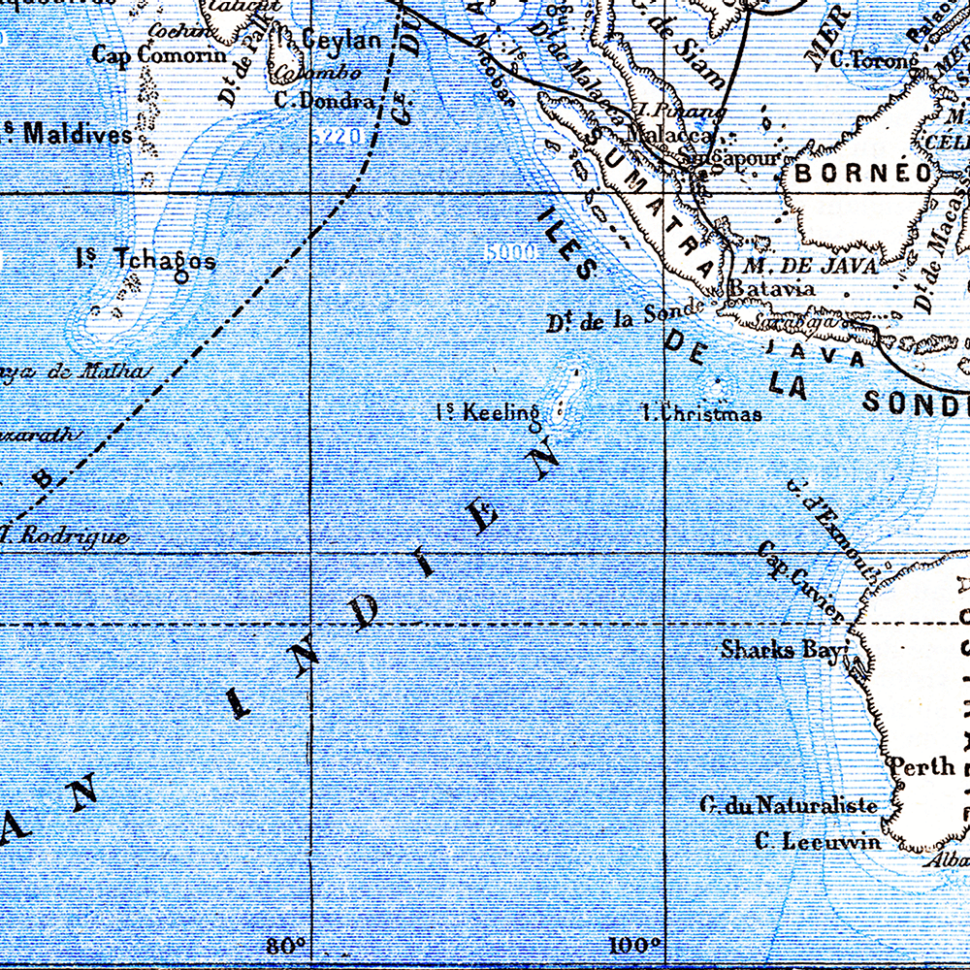
Christmas Island: Voyages of Discovery
View article
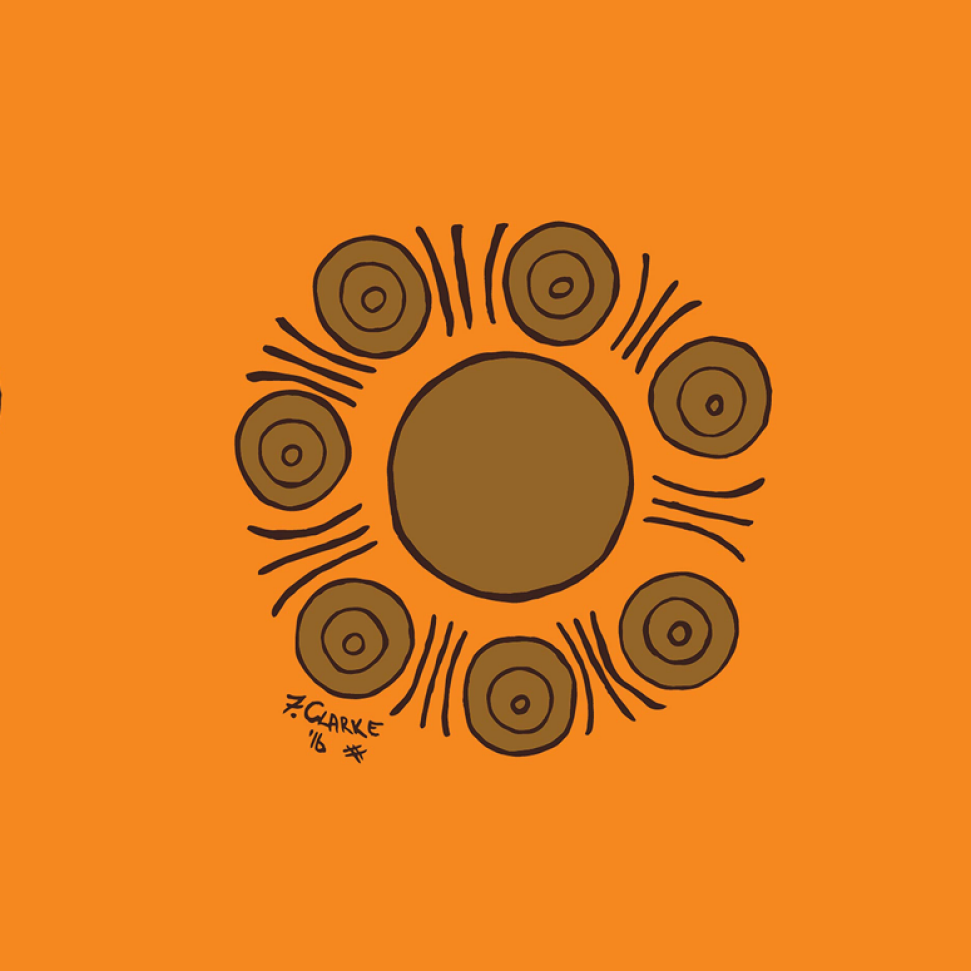
Walkabout Wickets: from artwork to postmark
View article
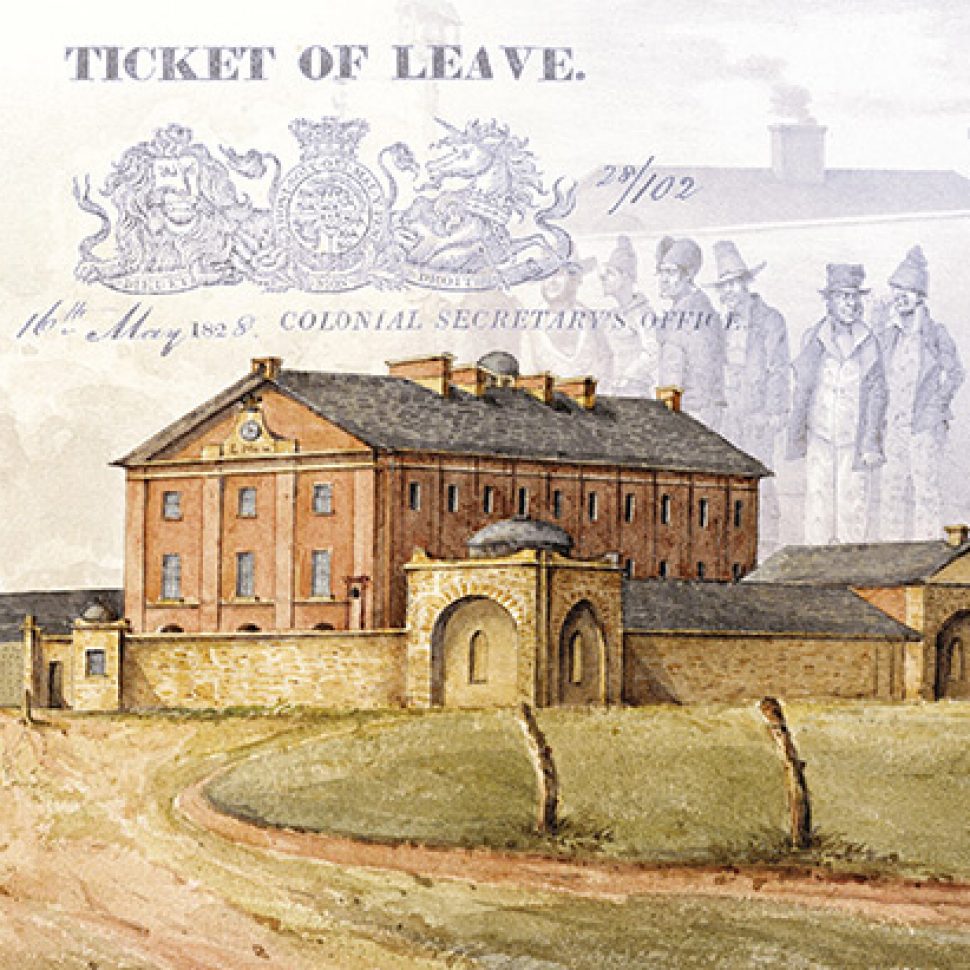
Exploring our convict past
View article
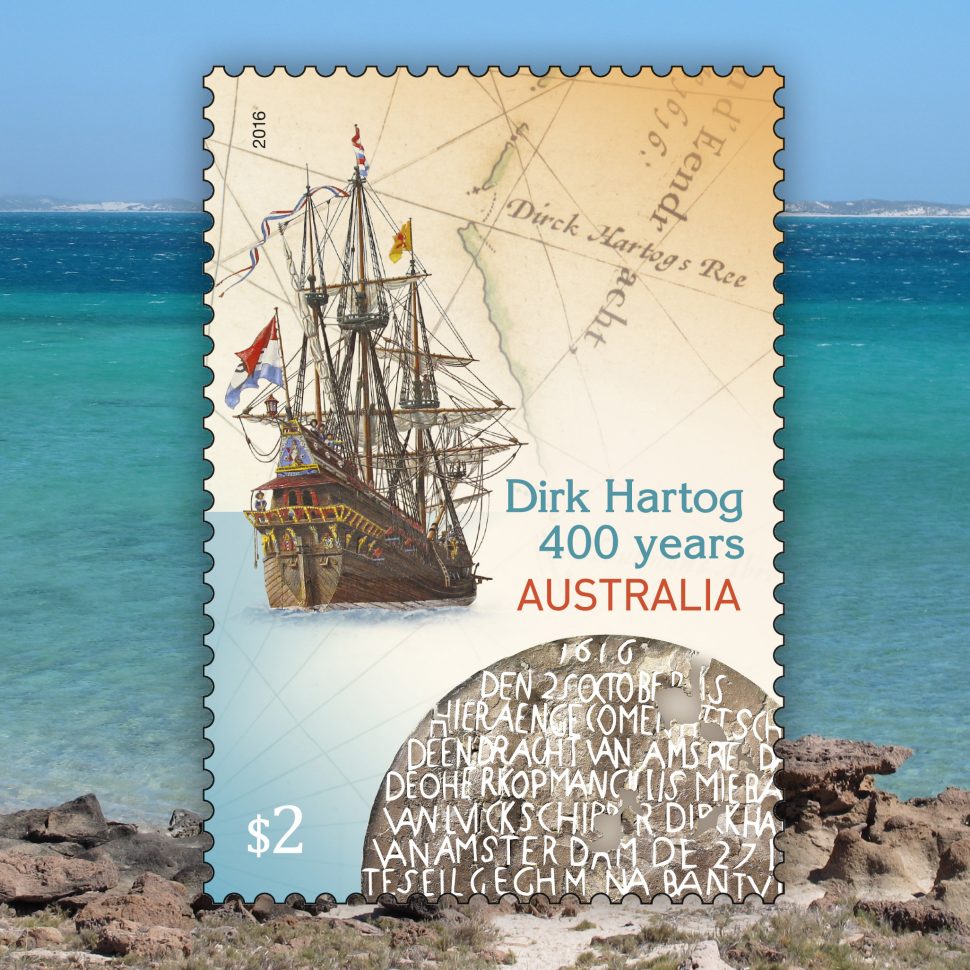
400th Anniversary of the Landing of Dirk Hartog
View article

